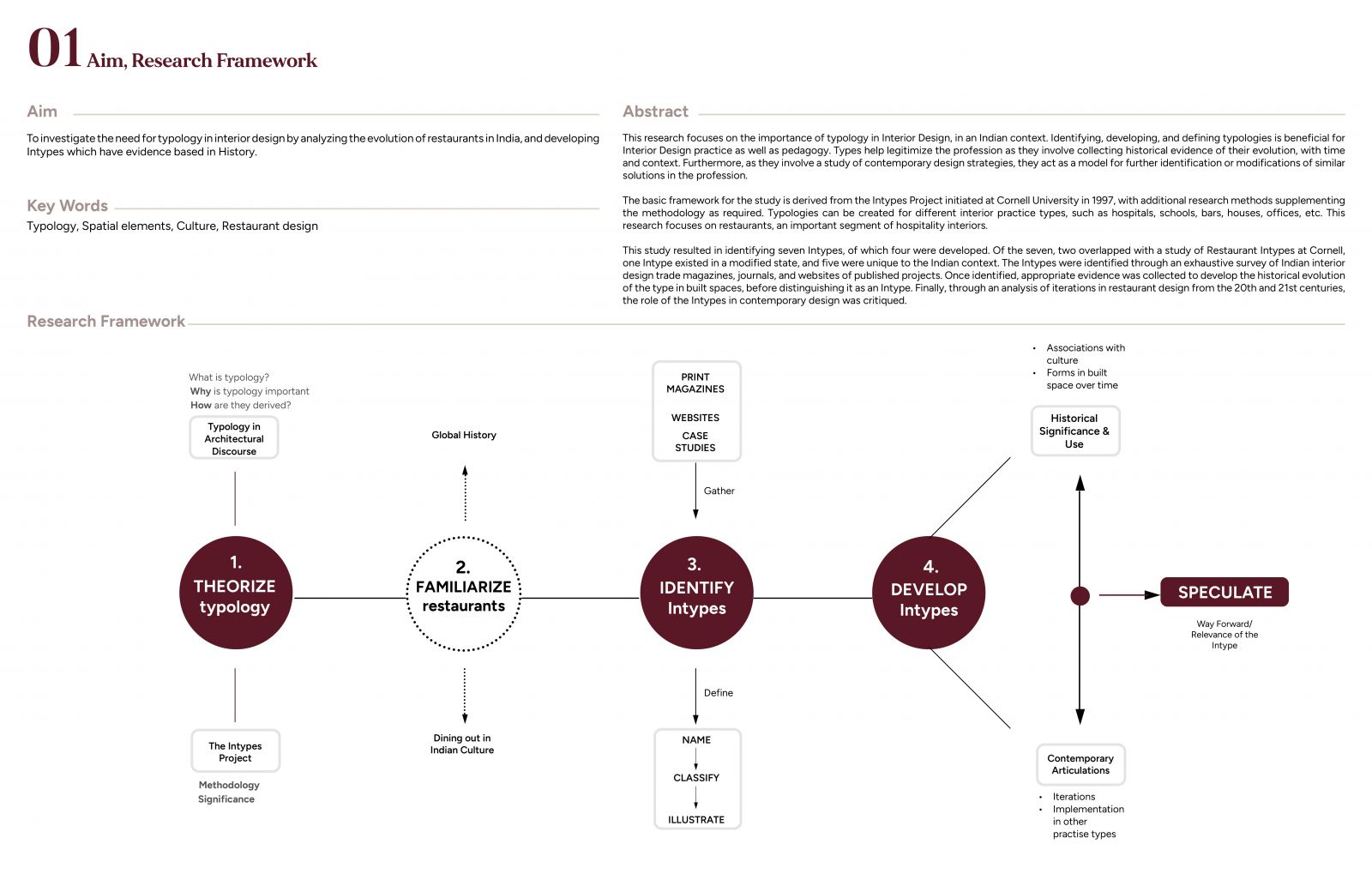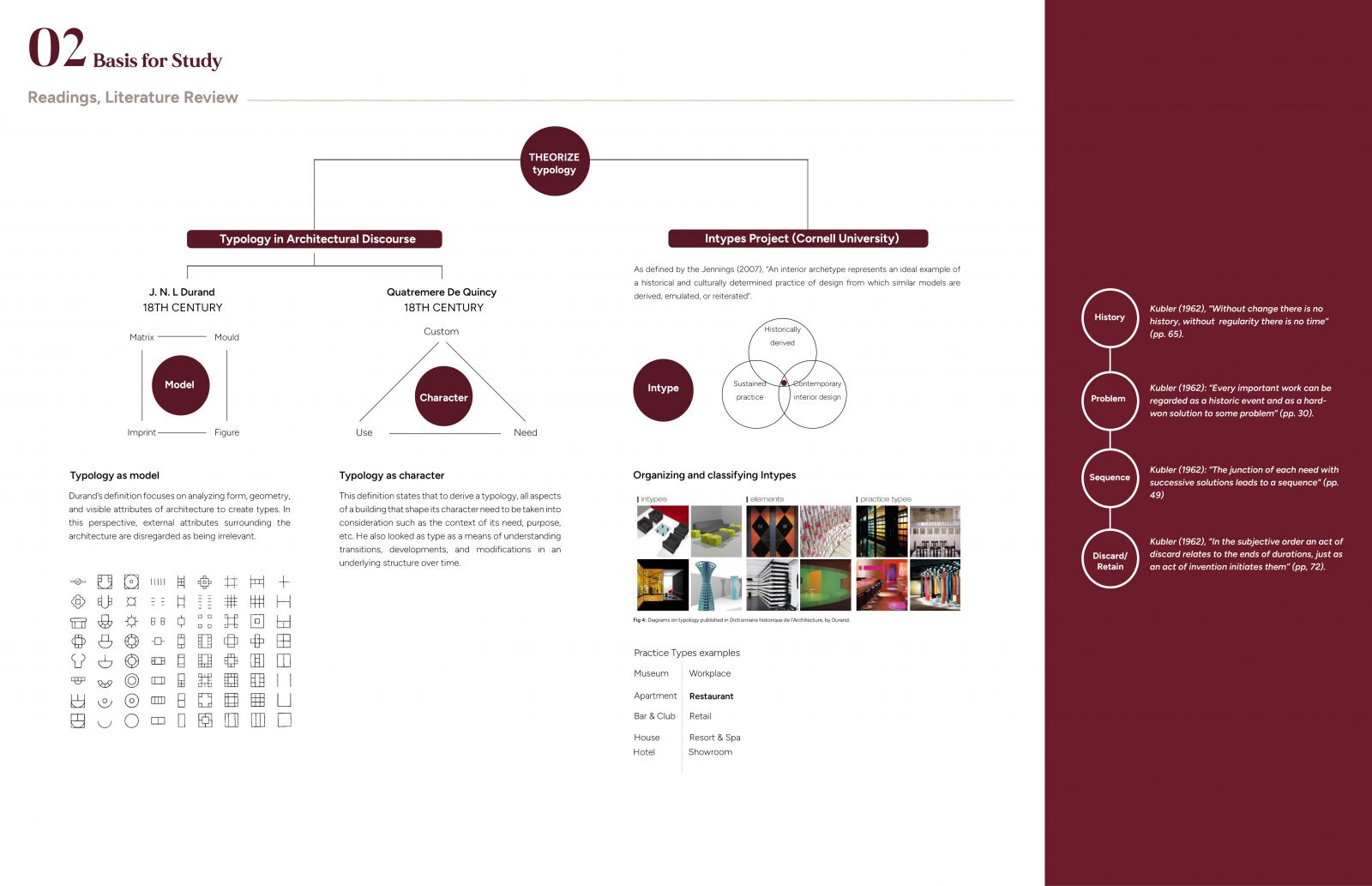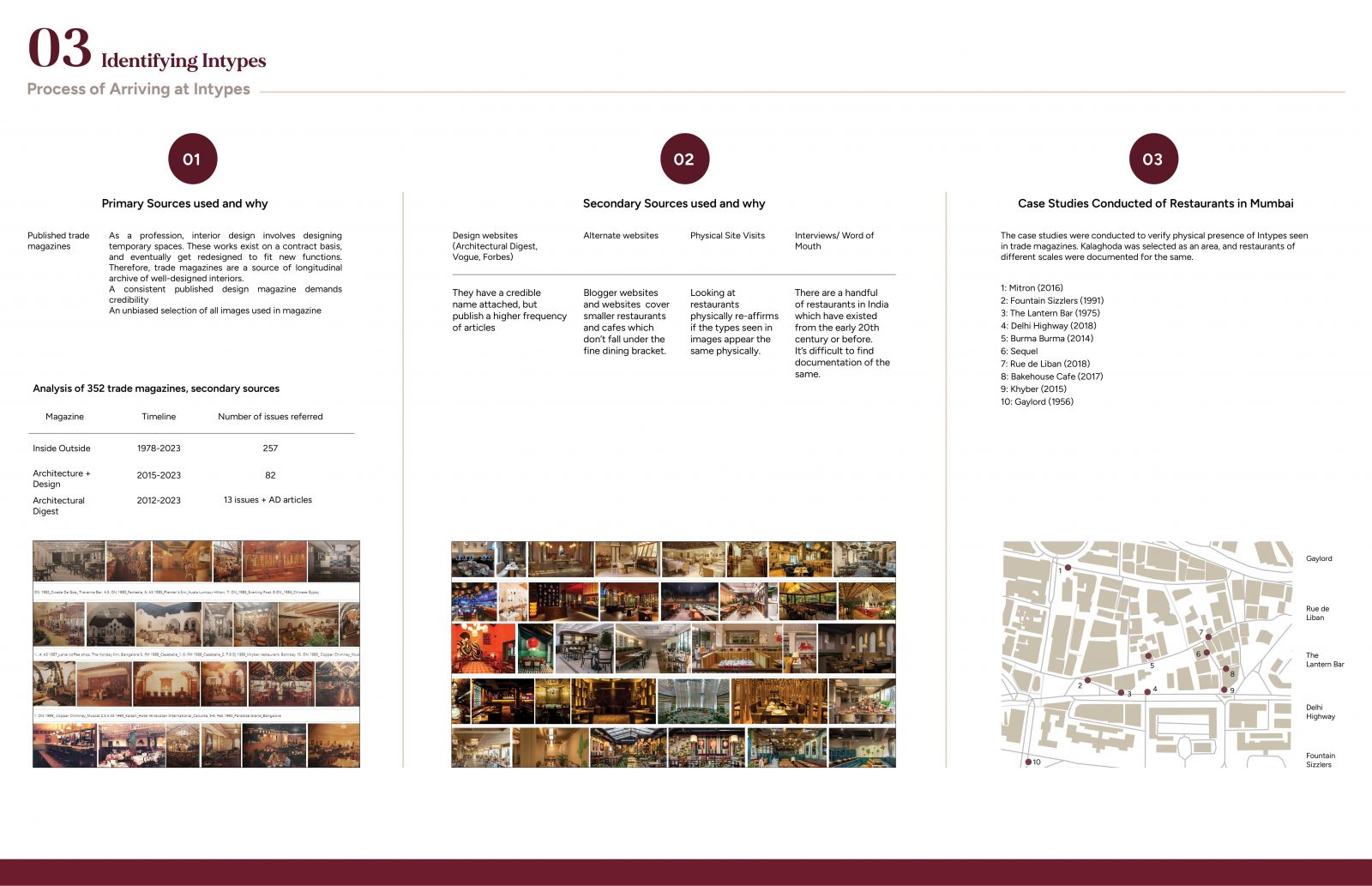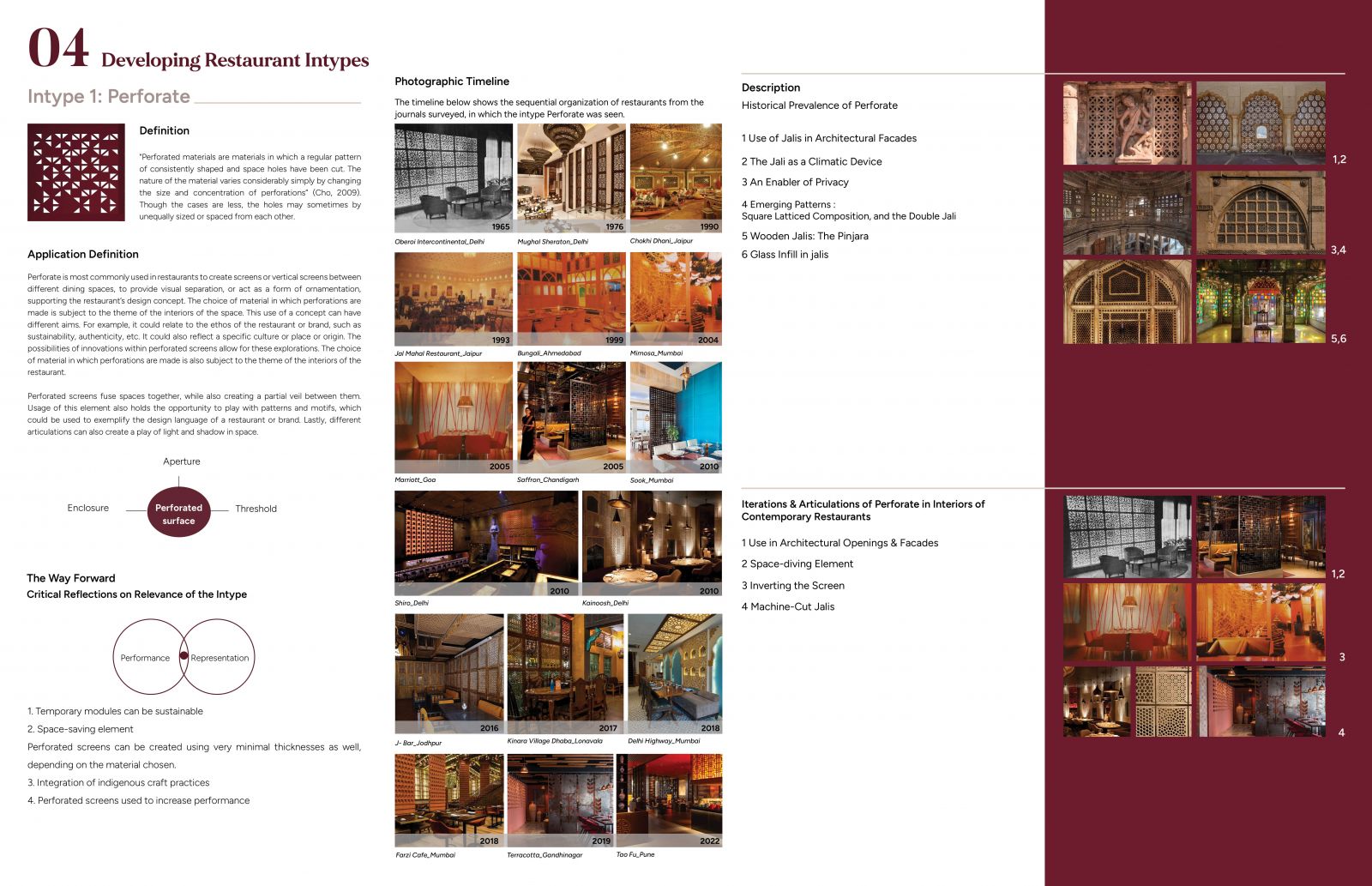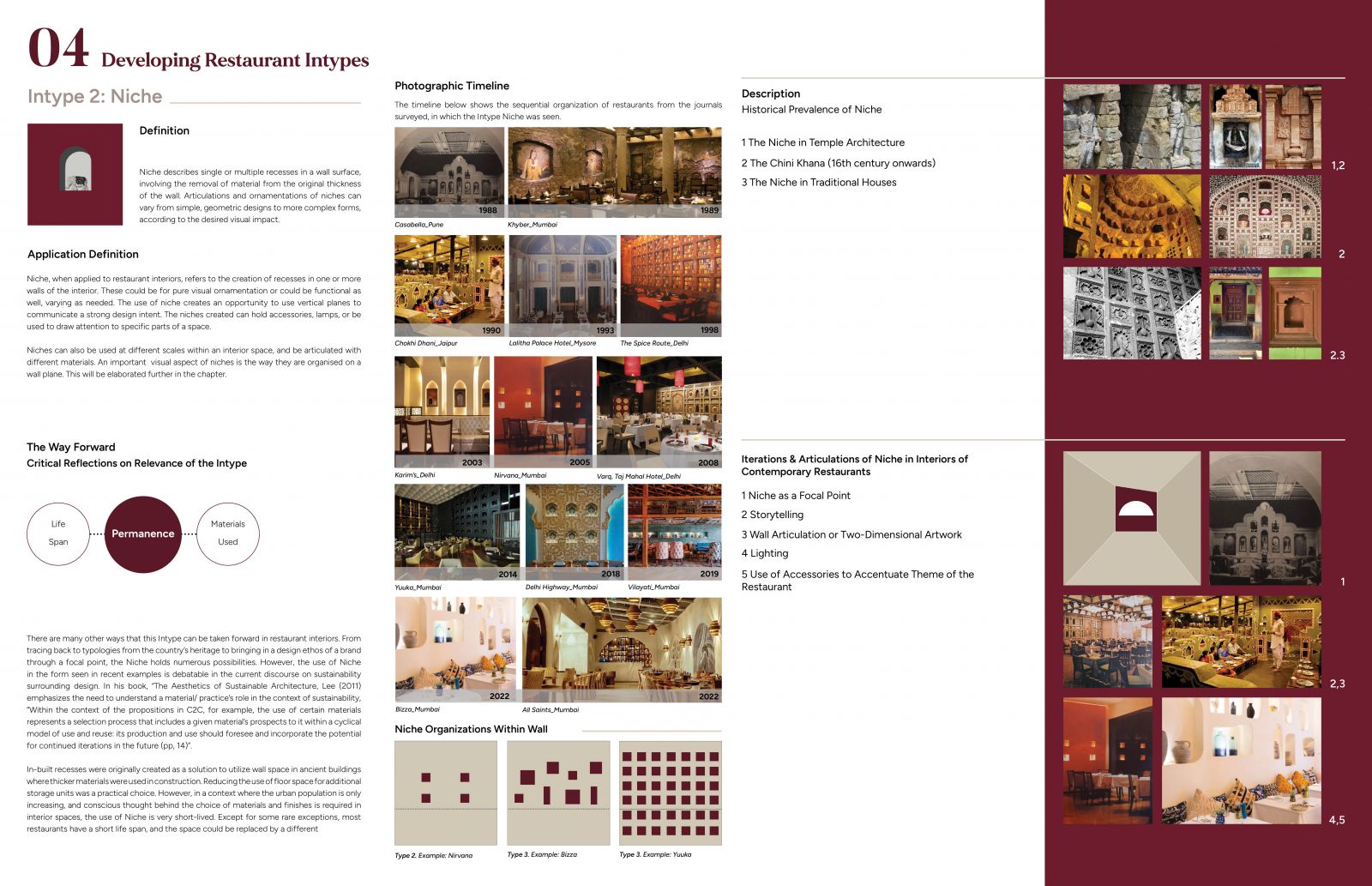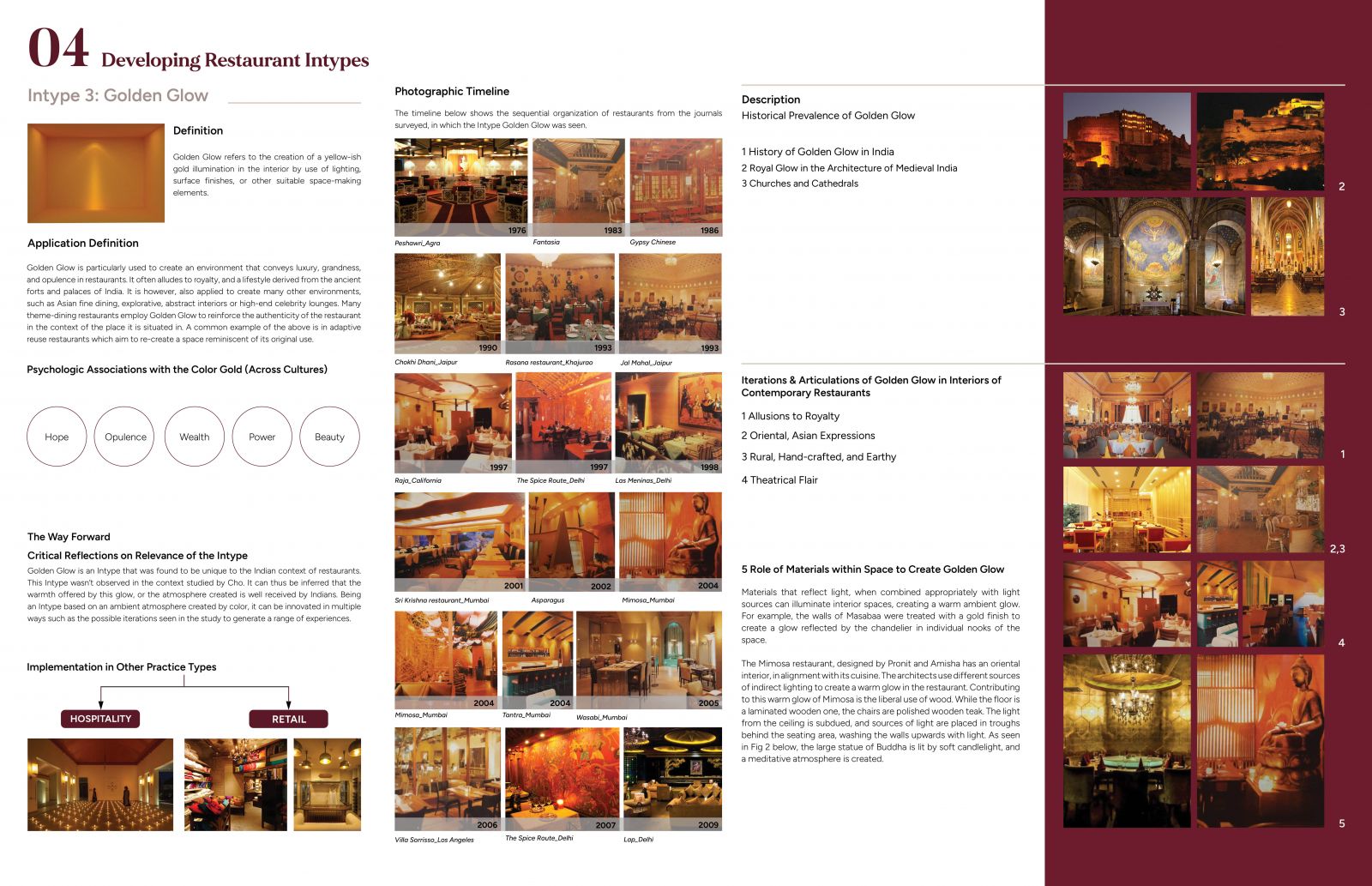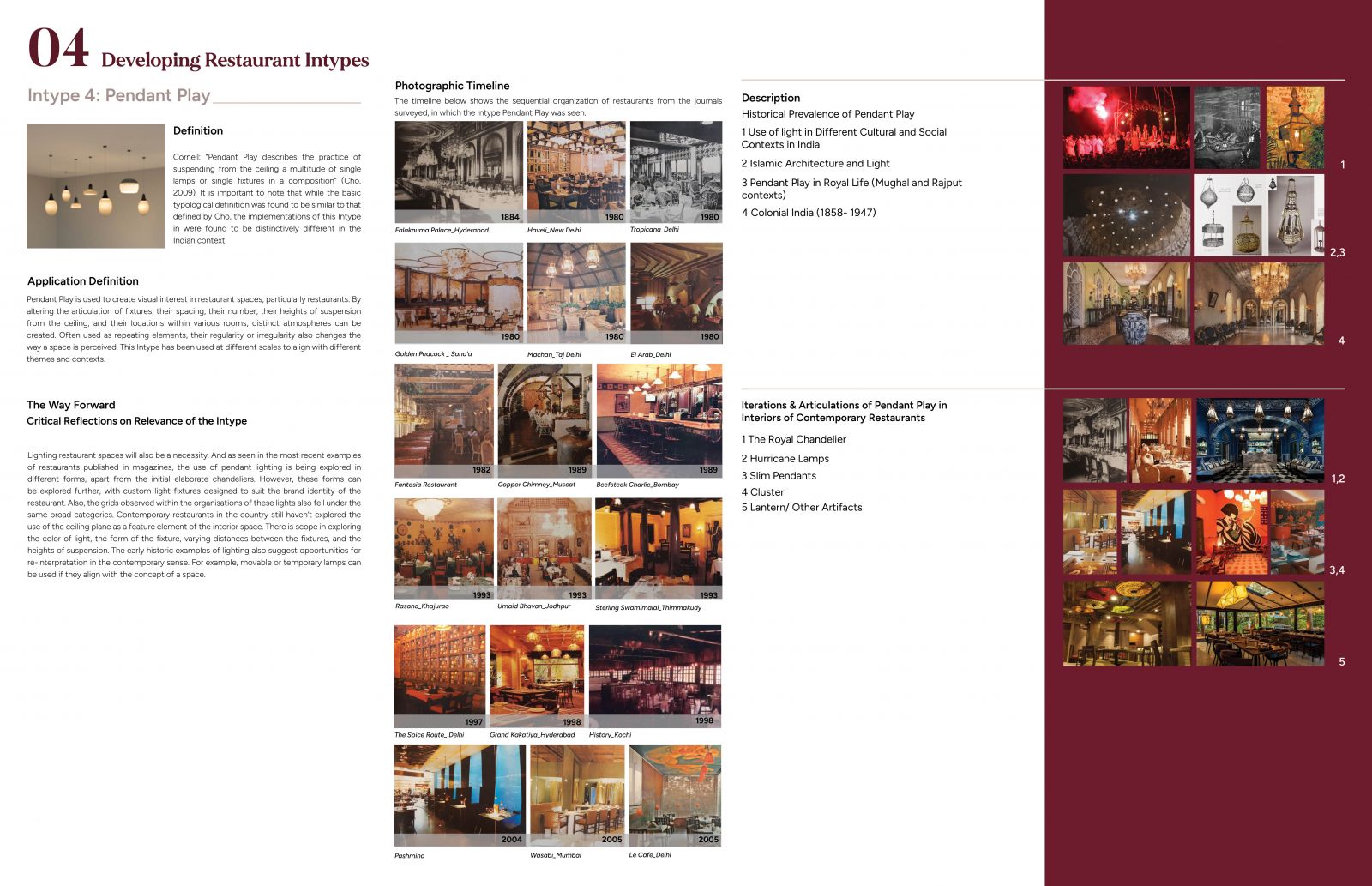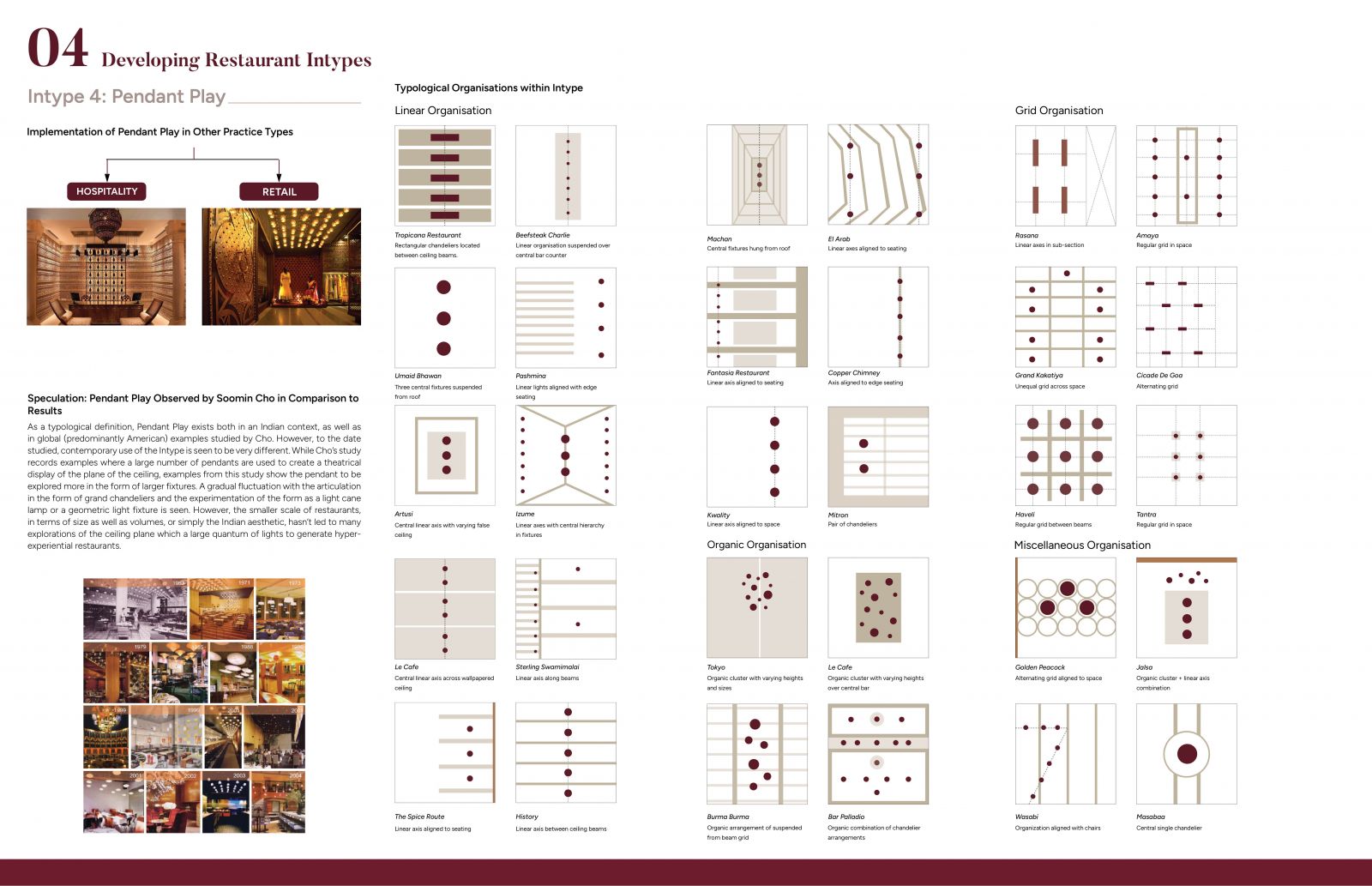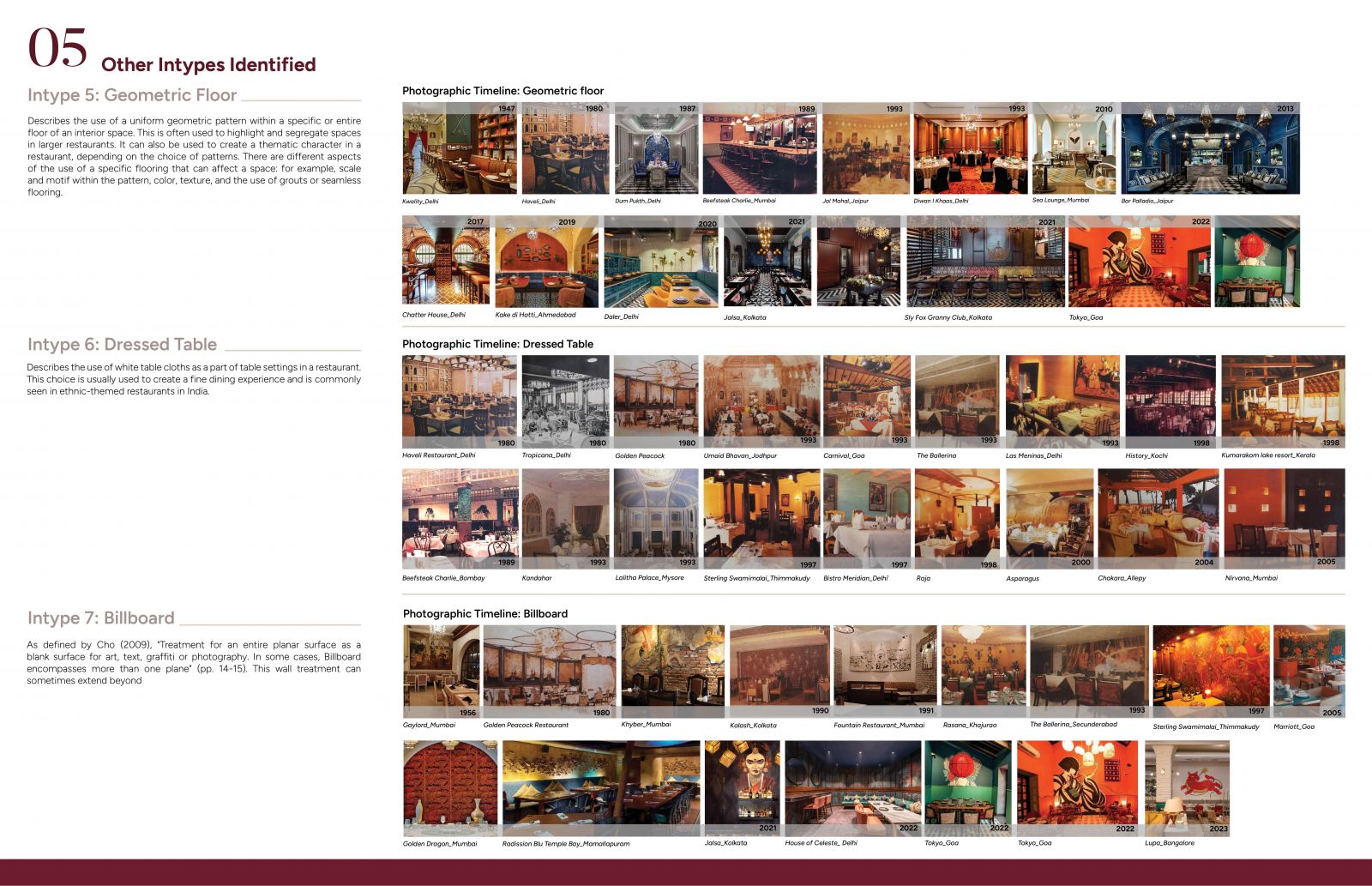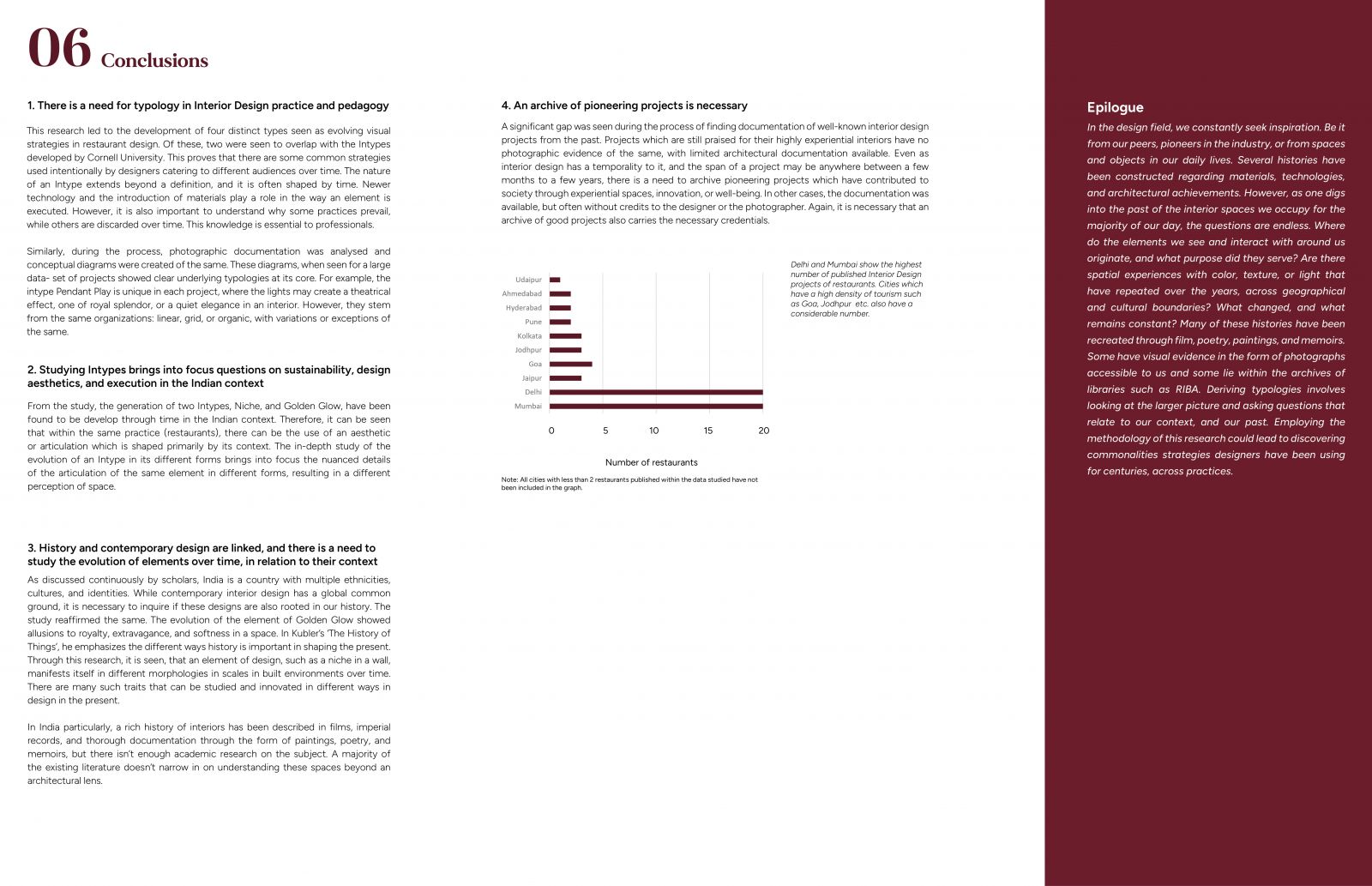Your browser is out-of-date!
For a richer surfing experience on our website, please update your browser. Update my browser now!
For a richer surfing experience on our website, please update your browser. Update my browser now!
This research focuses on the importance of typology in Interior Design, in an Indian context. Identifying, developing, and defining typologies is beneficial for Interior Design practice as well as pedagogy. Types help legitimize the profession as they involve collecting historical evidence of their evolution, with time and context. Furthermore, as they involve a study of contemporary design strategies, they act as a model for further identification or modifications of similar solutions in the profession. The basic framework for the study is derived from the Intypes 1Project initiated at Cornell University in 1997, with additional research methods supplementing the methodology as required. Typologies can be created for different interior practice types, such as hospitals, schools, bars, houses, offices, etc. This research focuses on restaurants, an important segment of hospitality interiors. This study resulted in identifying seven Intypes, of which four were developed. Of the seven, two overlapped with a study of Restaurant Intypes at Cornell, one Intype existed in a modified state, and five were unique to the Indian context. The Intypes were identified through an exhaustive survey of Indian interior design trade magazines, journals, and websites of published projects. Once identified, appropriate evidence was collected to develop the historical evolution of the type in built spaces, before distinguishing it as an Intype. Finally, through an analysis of iterations in restaurant design from the 20th and 21st centuries, the role of the Intypes in contemporary design was critiqued.
View Additional Work